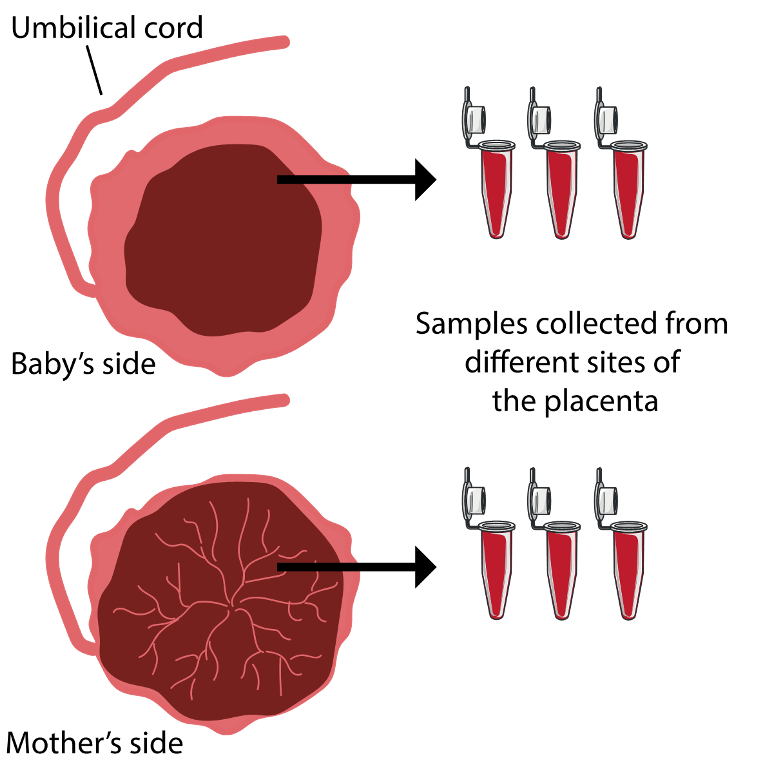It takes three to tango:
the placenta!
26 Mar 2021
(Press ? for help, Esc for over viewspace and p for next and previous slide)
What is the placenta?
- An organ attached to the lining of the womb
- The vital link between the mum and the baby during pregnancy
What does it do?
- Transfers oxygen and nutrients to the growing baby via the umbilical cord
- Removes carbon dioxide and waste products from the baby’s blood
- Shields the baby against most infections
- Produces hormones which support the pregnancy
How to keep it healthy?
- Attend antenatal check-ups regularly
- Avoid smoking, drinking alcohol and using illegal drugs during pregnancy
- Consult your doctor before taking any medicines or supplements during pregnancy
First trimester (1-12 weeks)
- The placenta is formed
- Some cells from the embryo will form the baby’s side of the placenta, by attaching to the wall of the uterus
- The umbilical cord is formed. It provides a connection between the baby and the placenta
- On the mother’s side, there is an increased blood flow to certain “blood pools”
First trimester (continued)
- The baby’s and mother’s blood will actually never mix. They will be separated via blood vessel walls in these “blood pools”
- The vessel wall will, however, allow small substances, like oxygen and sugar, to pass between the mother to the baby
- At end of the first trimester, the baby gets a full blood supply from the placenta
Second trimester (13-27 weeks)
- The baby will now receive essential substances, such as oxygen and nutrition, via the placenta and the umbilical cord
- Larger substances, like most bacteria, cannot pass from the mother to the baby, which means that the baby is protected from most pathogens even if the mother gets infected
- Waste products from the baby are transported via the placenta to the mother, and are then processed further in the mother’s organs
Third trimester (28-40+ weeks)
- Immunoglobulin G antibodies can pass from the mother to the baby. These antibodies can help the baby’s immune system to recognise and destroy pathogens
- At end of pregnancy, the placenta weighs around 500 g (or 1lb)
Delivery
- The placenta detaches from the uterus and is delivered after the baby is born
- The placenta is usually disposed afterwards. However, sometimes placentas are collected for research purposes
- The examination of the placenta can help researchers to better understand placental function and the role the placenta plays in a healthy pregnancy, and to develop new tests and therapies to prevent any placenta-related problems in pregnancy
References
Quiz
Thank you for visiting us
- Please give us some feedback through a short survey. This will help us to develop our event further.
- Please see this if you’d like to know how it was made.


